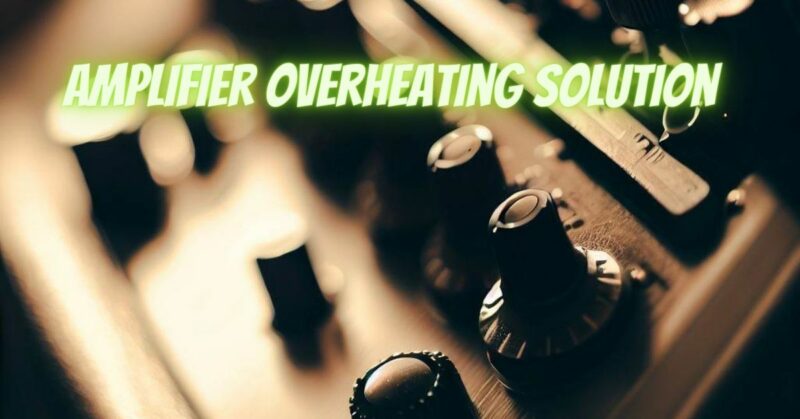Amplifier overheating is a common issue that can lead to performance problems and potentially damage your valuable audio equipment. Overheating can occur in various types of amplifiers, including tube amps, solid-state amps, and Class D amps. In this article, we’ll explore the common causes of amplifier overheating and provide practical solutions to keep your amp cool and reliable, ensuring optimal sound performance and longevity.
Causes of Amplifier Overheating
- Inadequate Ventilation: One of the primary causes of amplifier overheating is poor ventilation. Amplifiers generate heat during operation, and if they are placed in enclosed spaces or stacked with other equipment, the heat cannot dissipate efficiently.
- High Ambient Temperature: Operating amplifiers in hot environments, such as under direct sunlight or in rooms with poor air circulation, can exacerbate overheating issues.
- Overloading: Driving the amplifier beyond its rated power or connecting speakers with a lower impedance than recommended can lead to excessive heat generation.
- Dust and Dirt Buildup: Accumulation of dust and dirt inside the amplifier can hinder heat dissipation and cause components to overheat.
Amplifier Overheating Solutions
- Ensure Proper Ventilation: Place the amplifier in a well-ventilated area with enough space around it to allow for proper airflow. Avoid enclosing the amplifier in a cabinet or stacking other equipment on top of it.
- Use Cooling Fans: Consider using cooling fans or installing a fan kit in the amplifier to enhance heat dissipation. Fans can help draw hot air away from the internal components, keeping the amplifier cooler.
- Check Speaker Impedance: Verify that the speakers connected to the amplifier match the recommended impedance rating. Incorrect speaker impedance can increase the current draw and cause the amp to overheat.
- Lower Volume Levels: Avoid driving the amplifier at maximum volume levels for extended periods. Lowering the volume can reduce the load on the amplifier and decrease heat generation.
- Clean the Amplifier: Regularly clean the amplifier to remove dust and dirt buildup. Use a soft, lint-free cloth to wipe down the exterior and a compressed air duster to clean hard-to-reach areas.
- Install Thermal Protection: If your amplifier supports it, enable the thermal protection feature. Thermal protection circuits automatically shut down the amp if it reaches unsafe operating temperatures, safeguarding it from damage.
- Relocate the Amplifier: If the amp is operating in a hot environment, relocate it to a cooler area with better air circulation. Avoid placing the amplifier under direct sunlight or near heat sources.
- Schedule Maintenance: Schedule regular maintenance for your amplifier. If you notice persistent overheating issues, have the amp inspected by a qualified technician to check for internal problems or faulty components.
Amplifier overheating can be a significant concern for audio enthusiasts and professionals alike. By following these solutions, you can ensure that your amplifier remains cool and reliable, delivering optimal sound performance and longevity. Proper ventilation, appropriate speaker impedance, responsible volume levels, and regular maintenance are essential factors to consider in preventing amplifier overheating. Implementing these measures will help you enjoy your audio equipment to its fullest potential, without the worry of overheating issues interfering with your listening experience.


